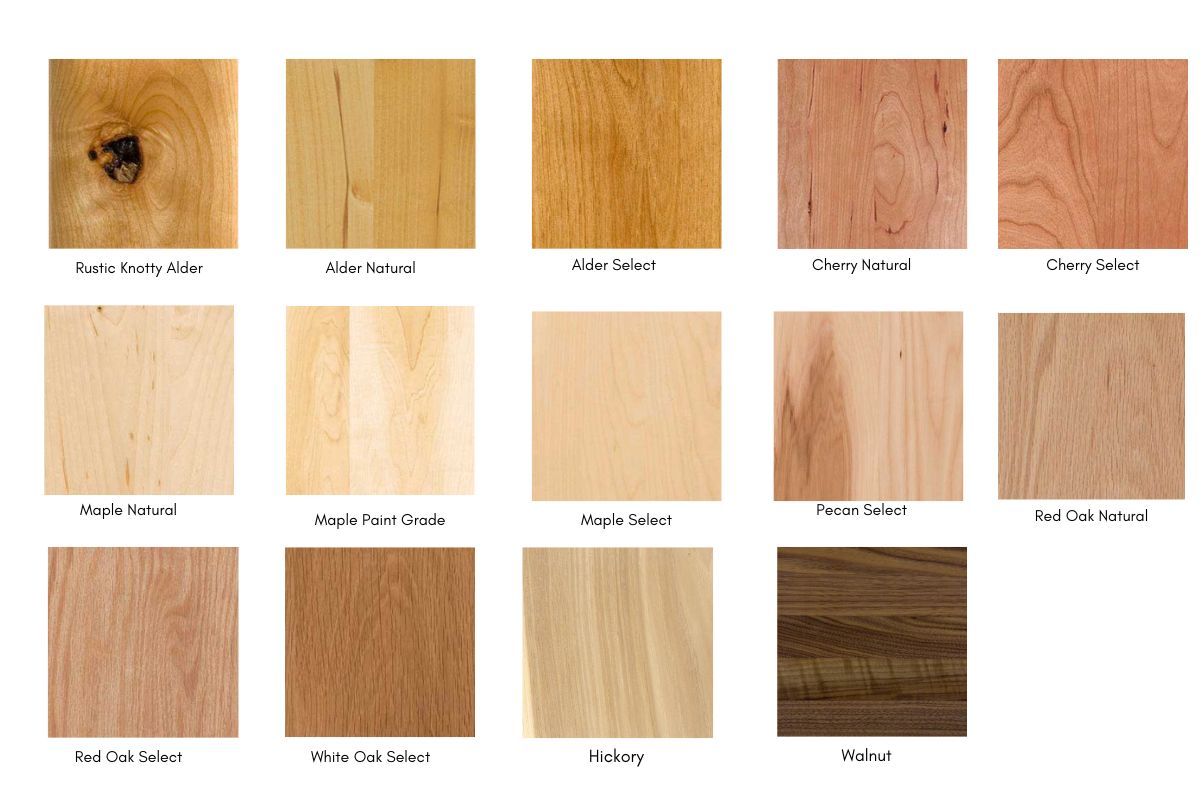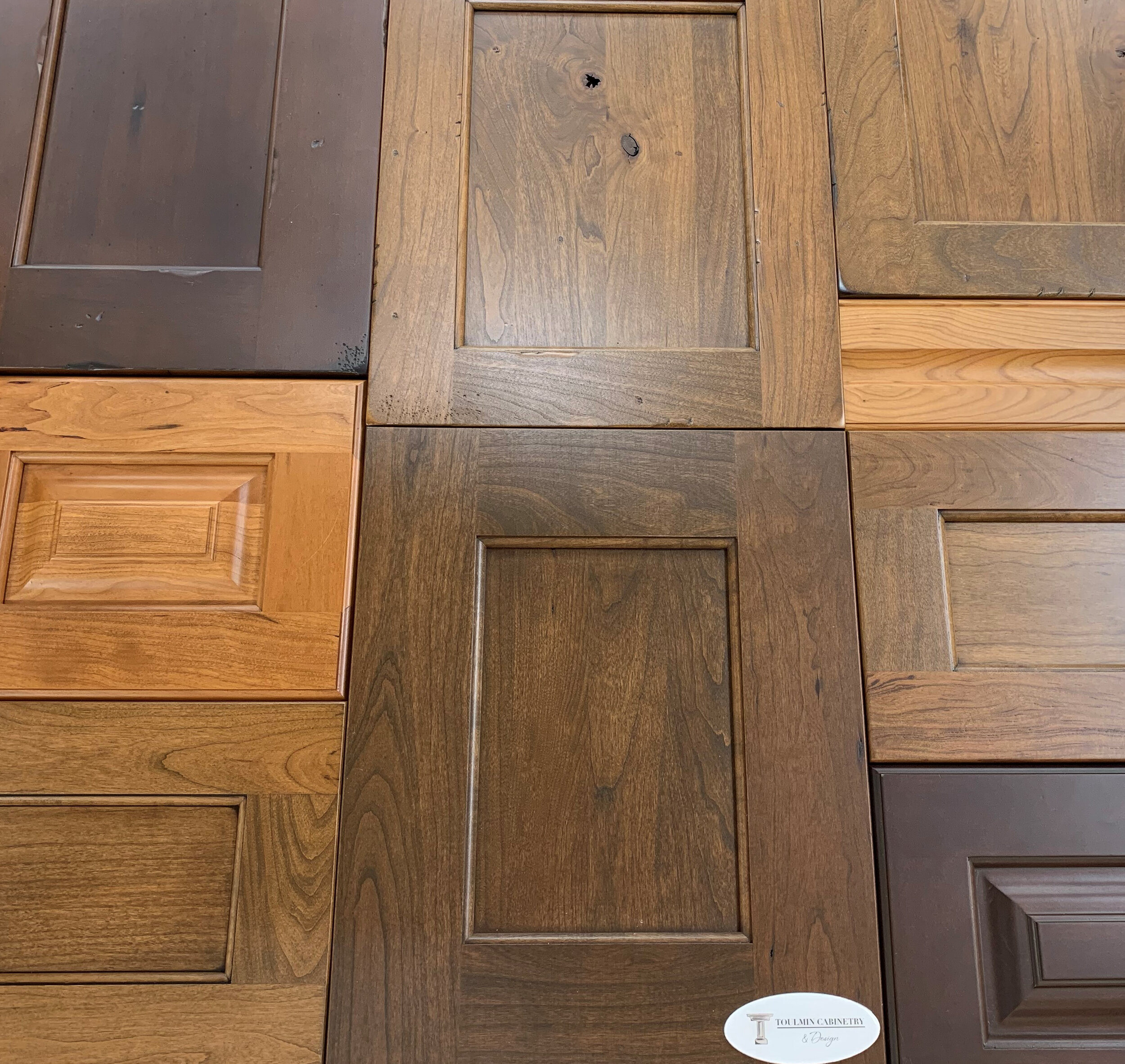Appearance and Aesthetics

Maple and cherry cabinets offer distinct visual appeals that cater to different aesthetic preferences. Their unique grain patterns, color variations, and overall style contribute to the character of a space, influencing the overall design aesthetic.
Grain Patterns and Color Variations
The grain patterns and color variations of maple and cherry cabinets play a significant role in their visual appeal. Maple, known for its tight, fine grain, often presents a clean and contemporary look. Its pale, creamy hue, sometimes with subtle hints of brown, offers a neutral backdrop for various design styles. Cherry, on the other hand, boasts a rich, reddish-brown color with prominent grain patterns, creating a more traditional and warm ambiance. Its color deepens with age, adding a vintage charm to the cabinetry.
Finishes for Maple and Cherry Cabinets
Finishes can dramatically alter the appearance of maple and cherry cabinets, enhancing their natural beauty or creating a completely different aesthetic. For maple cabinets, a clear finish allows the wood’s natural beauty to shine through, highlighting its fine grain. Stains can be used to add warmth or depth to the wood, while paints offer a wider range of color options, allowing for a modern or eclectic look. Cherry cabinets, with their inherent richness, often benefit from a clear finish that accentuates their natural color and grain patterns. Darker stains can further deepen the wood’s color, creating a sophisticated and elegant appearance.
Design Styles that Complement Maple and Cherry Cabinets
Maple and cherry cabinets seamlessly integrate into various design styles, adding their unique character to the overall aesthetic.
- Maple cabinets, with their clean lines and neutral color, complement modern and contemporary spaces, creating a sense of simplicity and sophistication. They work well with minimalist furniture, sleek appliances, and geometric patterns.
- Cherry cabinets, with their warm tones and traditional feel, are ideal for traditional, farmhouse, and rustic styles. They pair well with antique furniture, distressed finishes, and natural textures.
Durability and Maintenance

The durability and maintenance requirements of maple and cherry cabinets are important considerations for homeowners. These factors can significantly impact the longevity and appearance of your kitchen.
Hardness and Scratch Resistance
Maple and cherry wood possess different levels of hardness and scratch resistance. Maple, with its Janka hardness rating of 1450 lbf, is considered harder than cherry, which has a rating of 950 lbf. This translates to maple being more resistant to dents and scratches. However, cherry, while softer, is still a durable wood that can withstand everyday wear and tear.
Maintenance Requirements, Maple versus cherry cabinets
Both maple and cherry cabinets require regular maintenance to preserve their beauty and longevity.
Cleaning
- Maple and cherry cabinets can be cleaned with a damp cloth and mild soap. Avoid using harsh chemicals or abrasive cleaners that can damage the finish.
- Regular dusting helps prevent the accumulation of dirt and grime, which can dull the finish over time.
Sealing
- Both maple and cherry cabinets benefit from a protective sealant. This sealant creates a barrier against moisture, stains, and scratches.
- A sealant can be applied during the initial finishing process or as a periodic maintenance measure.
Refinishing
- Maple and cherry cabinets may require refinishing over time, depending on wear and tear and the type of finish applied.
- Refinishing involves stripping the old finish and applying a new one. This process can restore the original beauty of the cabinets and protect them from future damage.
Warping and Cracking
Both maple and cherry wood are susceptible to warping and cracking if exposed to extreme temperature and humidity fluctuations.
Warping
- Warping occurs when wood expands and contracts due to changes in moisture content. This can cause cabinets to become misshapen.
- To minimize warping, it is important to maintain a stable temperature and humidity level in the kitchen. Proper ventilation and air conditioning can help prevent extreme fluctuations.
Cracking
- Cracking can occur when wood dries out too quickly or is exposed to sudden temperature changes. This can cause the wood to split or crack.
- To prevent cracking, it is important to acclimate wood to its new environment before installation. This involves storing the wood in the same temperature and humidity as the kitchen for several days.
Cost and Value: Maple Versus Cherry Cabinets

The cost of maple and cherry cabinets can vary significantly depending on factors such as quality, style, size, and customization. While both wood types are known for their durability and aesthetic appeal, they differ in price range and long-term value appreciation. Understanding these differences can help you make an informed decision based on your budget and preferences.
Price Range
The price range for maple and cherry cabinets is influenced by several factors, including the quality of the wood, the complexity of the design, and the size of the cabinets. Generally, cherry cabinets tend to be more expensive than maple cabinets.
- Maple cabinets: Maple cabinets are typically more affordable than cherry cabinets. They range from $200 to $500 per linear foot for standard, ready-to-assemble ( RTA) cabinets. Custom maple cabinets can cost $500 to $1,000 per linear foot or more, depending on the level of customization and the craftsmanship involved.
- Cherry cabinets: Cherry cabinets are generally more expensive than maple cabinets due to their higher density, unique grain patterns, and rich color. They can range from $300 to $700 per linear foot for standard RTA cabinets. Custom cherry cabinets can cost $700 to $1,500 per linear foot or more, depending on the design and craftsmanship.
Long-Term Value Appreciation
Both maple and cherry are considered hardwood species, known for their durability and longevity. This makes them suitable for long-term investment.
- Maple cabinets: Maple cabinets are known for their durability and resistance to scratches and dents. Their classic appearance and versatility make them a popular choice for various styles. Over time, maple cabinets can appreciate in value, especially if they are well-maintained and in good condition.
- Cherry cabinets: Cherry cabinets are renowned for their rich color, unique grain patterns, and warm, inviting appeal. They tend to age gracefully, developing a beautiful patina over time. This contributes to their long-term value appreciation, making them a desirable investment for homeowners.
Factors Contributing to Cost
The cost of maple and cherry cabinets is influenced by several factors, including the sourcing of the wood, the manufacturing process, and the labor involved.
- Sourcing: The cost of wood varies depending on its origin, quality, and availability. Sourcing high-quality wood from sustainable forests can significantly impact the price.
- Manufacturing: The manufacturing process, including cutting, shaping, finishing, and assembly, contributes to the overall cost. Custom-made cabinets require more labor and craftsmanship, which increases their price.
- Labor: Skilled labor is essential for crafting high-quality cabinets. The cost of labor can vary depending on the location, experience, and expertise of the cabinetmakers.
Maple versus cherry cabinets – Maple and cherry cabinets offer distinct aesthetics. Maple’s tight grain lends a clean, modern feel, while cherry’s rich color and open grain evoke warmth and tradition. Regardless of your choice, consider the finishing touch: black cast iron cabinet handles add a touch of timeless elegance that complements both maple and cherry’s natural beauty.
These handles, with their robust presence, provide a striking contrast that elevates the overall design, making your cabinets truly stand out.
Maple and cherry cabinets offer distinct aesthetics, with maple’s lighter hue often favored for a contemporary feel and cherry’s rich tones lending a more traditional charm. But beyond the kitchen, these choices can extend to other spaces like the bathroom, where a sleek bathroom medicine cabinet black could complement both styles.
The choice ultimately depends on your personal preference and the overall design theme of your home.
